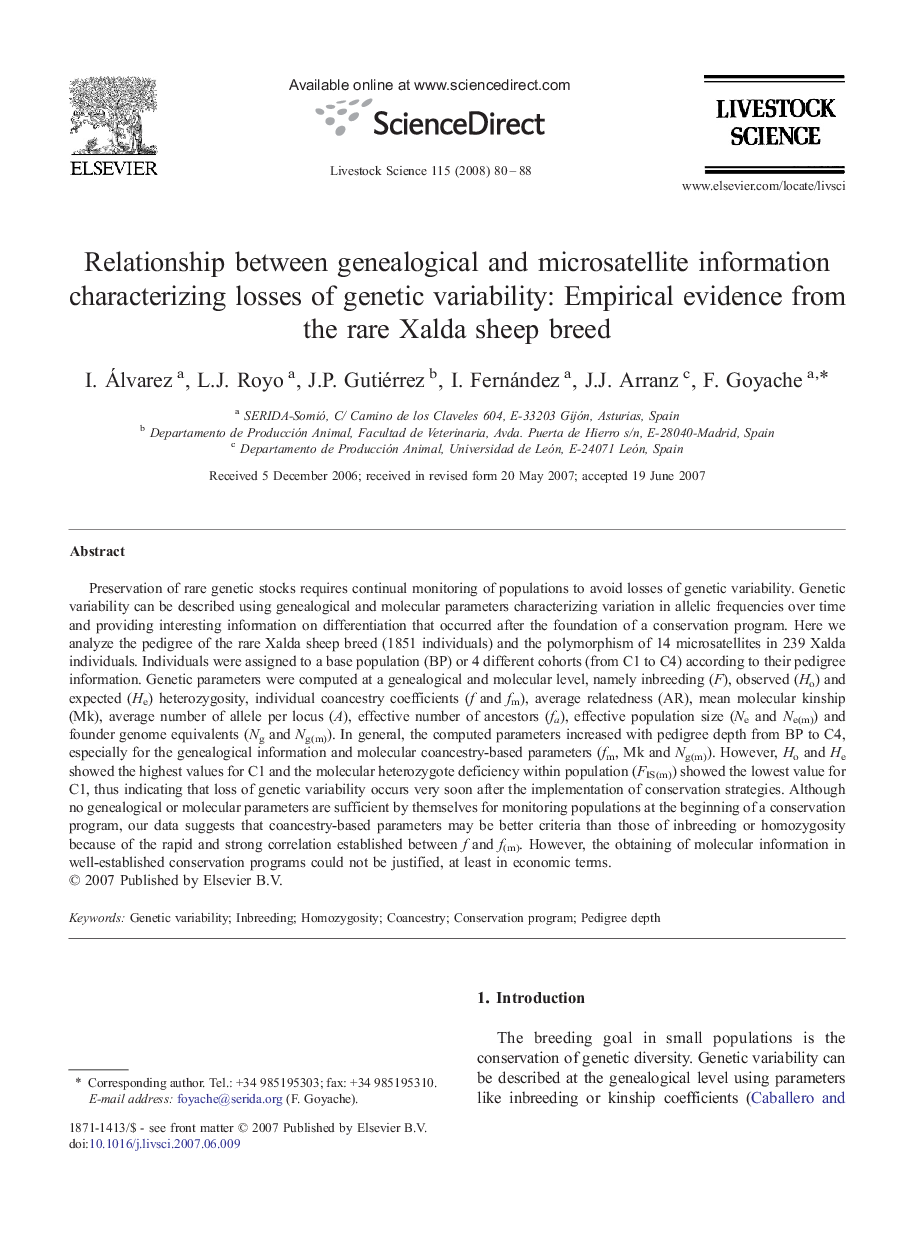| Article ID | Journal | Published Year | Pages | File Type |
|---|---|---|---|---|
| 2448543 | Livestock Science | 2008 | 9 Pages |
Abstract
Preservation of rare genetic stocks requires continual monitoring of populations to avoid losses of genetic variability. Genetic variability can be described using genealogical and molecular parameters characterizing variation in allelic frequencies over time and providing interesting information on differentiation that occurred after the foundation of a conservation program. Here we analyze the pedigree of the rare Xalda sheep breed (1851 individuals) and the polymorphism of 14 microsatellites in 239 Xalda individuals. Individuals were assigned to a base population (BP) or 4 different cohorts (from C1 to C4) according to their pedigree information. Genetic parameters were computed at a genealogical and molecular level, namely inbreeding (F), observed (Ho) and expected (He) heterozygosity, individual coancestry coefficients (f and fm), average relatedness (AR), mean molecular kinship (Mk), average number of allele per locus (A), effective number of ancestors (fa), effective population size (Ne and Ne(m)) and founder genome equivalents (Ng and Ng(m)). In general, the computed parameters increased with pedigree depth from BP to C4, especially for the genealogical information and molecular coancestry-based parameters (fm, Mk and Ng(m)). However, Ho and He showed the highest values for C1 and the molecular heterozygote deficiency within population (FIS(m)) showed the lowest value for C1, thus indicating that loss of genetic variability occurs very soon after the implementation of conservation strategies. Although no genealogical or molecular parameters are sufficient by themselves for monitoring populations at the beginning of a conservation program, our data suggests that coancestry-based parameters may be better criteria than those of inbreeding or homozygosity because of the rapid and strong correlation established between f and f(m). However, the obtaining of molecular information in well-established conservation programs could not be justified, at least in economic terms.
Related Topics
Life Sciences
Agricultural and Biological Sciences
Animal Science and Zoology
Authors
I. Álvarez, L.J. Royo, J.P. Gutiérrez, I. Fernández, J.J. Arranz, F. Goyache,
